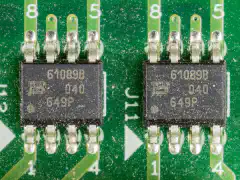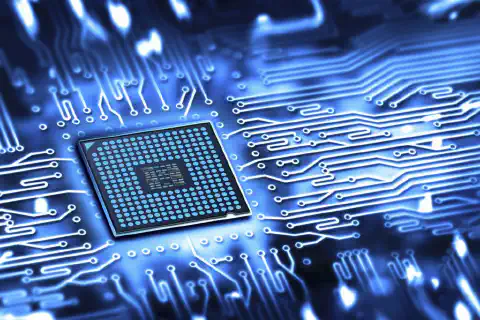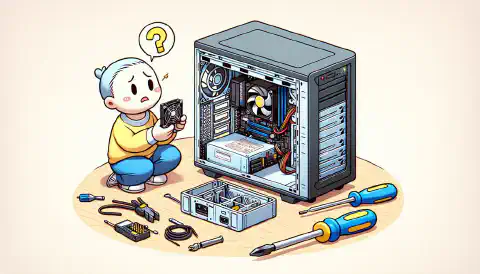Select the Best Surge Protector: Your Comprehensive Guide

Table of Contents
Protecting Your Tech: The Best Surge Protectors
Surge protectors are essential devices for safeguarding your valuable electronics from power surges. Whether it’s a lightning strike or a sudden voltage spike, these surges can cause irreparable damage to your devices. In this article, we will explore the importance of surge protectors and provide key takeaways to help you choose the best surge protector for your needs.
Key Takeaways
- Understand what a surge protector is and how it works
- Consider factors such as wattage, joule ratings, number of outlets, cord length, and additional features when choosing a surge protector
- Follow proper installation steps and place surge protectors in ideal locations
- Regularly inspect and clean surge protectors to ensure optimal performance
- Replace outdated surge protectors to maintain effective surge protection
Understanding Surge Protectors
What is a Surge Protector?
A surge protector, also known as a surge suppressor, is a device designed to protect electrical devices from voltage spikes or surges. These surges can occur due to lightning strikes, power outages, or fluctuations in the electrical grid. Surge protectors work by diverting excess voltage to the ground, preventing it from reaching and damaging connected devices.
- Surge protectors are essential for safeguarding sensitive electronics such as computers, televisions, and gaming consoles.
- They provide protection against power surges that can cause irreversible damage to these devices.
- Surge protectors typically have multiple outlets, allowing users to connect multiple devices to a single protector.
- Some surge protectors also come with additional features like USB ports for charging devices and built-in circuit breakers.
It is important to note that surge protectors have a limited lifespan and should be replaced periodically to ensure continued protection. Regular inspection and maintenance are necessary to keep surge protectors in optimal condition.
How Do Surge Protectors Work?
A surge protector is designed to protect your electronic devices from power surges, which are sudden increases in voltage that can damage or destroy your equipment. Surge protectors work by diverting excess voltage away from your devices and into the grounding wire. This prevents the excess voltage from reaching your devices and causing damage.
- Surge protectors use metal oxide varistors (MOVs) to absorb excess voltage.
- MOVs are made of a semiconductor material that has a high resistance to current flow at normal voltages but becomes conductive at higher voltages.
- When a power surge occurs, the MOVs in the surge protector quickly absorb the excess voltage and redirect it to the grounding wire.
- Surge protectors also typically include a fuse or circuit breaker that cuts off power to the devices in case of a major surge.
Tip: It’s important to note that surge protectors have a limited lifespan and can wear out over time. It’s recommended to replace surge protectors every few years or after a major surge event.
Types of Surge Protectors
There are several types of surge protectors available, each offering different levels of protection and functionality.
Plug-in Surge Protectors: These surge protectors are the most common type and are designed to be plugged directly into a wall outlet. They typically have multiple outlets to accommodate several devices.
Power Strip Surge Protectors: Power strip surge protectors are similar to plug-in surge protectors but also include a power strip with multiple outlets. They are convenient for areas with limited wall outlets.
Whole House Surge Protectors: As the name suggests, whole house surge protectors are installed at the main electrical panel of a house. They provide protection for all the electrical devices in the house, including appliances and electronics.
Outlet Surge Protectors: Outlet surge protectors are installed directly into a wall outlet and provide protection for a single device. They are ideal for devices that require a dedicated surge protector.
When choosing a surge protector, consider the specific needs of your devices and the level of protection required.
Choosing the Right Surge Protector
Factors to Consider
When choosing a surge protector, there are several factors to consider:
Wattage and Joule Ratings: Look for a surge protector with higher wattage and joule ratings, as they indicate the protector’s ability to handle power surges.
Number of Outlets: Consider the number of outlets you need. Make sure the surge protector has enough outlets to accommodate all your devices.
Cord Length: Check the cord length to ensure it can reach your devices without straining or stretching.
Additional Features: Some surge protectors come with extra features like USB ports, Ethernet ports, or coaxial cable protection. Consider these features based on your specific needs.
It’s important to carefully evaluate these factors to choose the right surge protector for your devices.
Wattage and Joule Ratings
Understanding the wattage and joule ratings of a surge protector is crucial in choosing the right one for your needs.
- Wattage rating indicates the maximum amount of power that can safely flow through the surge protector. It is important to ensure that the wattage rating of the surge protector is higher than the total power consumption of the devices you plan to connect.
- Joule rating measures the surge protector’s ability to absorb energy from power surges. A higher joule rating indicates better protection against larger surges.
When comparing surge protectors, consider the following:
- Look for a surge protector with a wattage rating that exceeds the total power consumption of your devices.
- Choose a surge protector with a higher joule rating for better protection against power surges.
- Keep in mind that the wattage and joule ratings are not the only factors to consider when choosing a surge protector. Other factors such as the number of outlets, cord length, and additional features should also be taken into account.
Tip: It is recommended to choose a surge protector with a joule rating of at least 1000 for basic protection.
Remember, understanding the wattage and joule ratings will help you make an informed decision when selecting a surge protector.
Number of Outlets
When choosing a surge protector, one important factor to consider is the number of outlets it provides. More outlets allow you to connect multiple devices to the surge protector, reducing the need for additional power strips or extension cords. This is especially beneficial if you have a home office or entertainment setup with numerous electronics.
- A surge protector with 6 to 8 outlets is typically sufficient for most households.
- If you have a larger setup or require more outlets, consider surge protectors with 10 or more outlets.
- Some surge protectors also offer spaced outlets to accommodate larger power adapters without blocking adjacent outlets.
Having an adequate number of outlets ensures that all your devices can be protected from power surges and eliminates the risk of overloading a single outlet. It also helps in organizing and decluttering your workspace or entertainment area.
Cord Length
When choosing a surge protector, the cord length is an important factor to consider. A longer cord allows for more flexibility in positioning the surge protector and reaching distant outlets. On the other hand, a shorter cord may be more convenient for compact spaces or when the surge protector will be placed close to the power source.
- A longer cord provides greater versatility in placement and reaching outlets in different locations.
- A shorter cord is more suitable for tight spaces or when the surge protector will be positioned near the power source.
It’s essential to assess your specific needs and the layout of your space to determine the ideal cord length for your surge protector. Consider factors such as the distance between outlets, the location of your devices, and any potential obstructions that may affect cord placement.
Tip: If you opt for a surge protector with a shorter cord, you can always use an extension cord to extend its reach if necessary.
Additional Features
When choosing a surge protector, it’s important to consider the additional features that can enhance its functionality and convenience. Here are some key features to look out for:
- USB Ports: Surge protectors with built-in USB ports allow you to conveniently charge your devices without the need for extra adapters.
- Power Switches: Surge protectors with individual power switches for each outlet make it easy to turn off specific devices when not in use, saving energy and reducing standby power consumption.
- Coaxial and Ethernet Protection: If you have devices that rely on coaxial or Ethernet connections, look for surge protectors that offer protection for these types of connections as well.
- Indicator Lights: Surge protectors with indicator lights provide visual confirmation that the unit is functioning properly and protecting your devices.
Remember to consider these additional features when selecting a surge protector to ensure it meets your specific needs and preferences.
Installation and Placement
Proper Installation Steps
Proper installation of a surge protector is crucial to ensure its effectiveness in protecting your devices. Follow these steps to install your surge protector correctly:
- Choose the right location: Place the surge protector near the devices you want to protect, such as your computer or entertainment center.
- Check the outlet: Ensure that the outlet you’re using is grounded and can handle the electrical load.
- Plug in the surge protector: Insert the surge protector’s plug into the grounded outlet.
- Connect your devices: Plug your electronic devices into the surge protector’s outlets.
- Test the surge protector: Use a surge protector tester or an indicator light to verify that the surge protector is working properly.
Remember, a surge protector is only effective if it is installed correctly and used as intended. Take the time to follow these installation steps to safeguard your valuable electronics.
Ideal Placement Locations
When it comes to placing your surge protector, there are a few key considerations to keep in mind:
Close to the Electronics: It is important to place the surge protector as close to your electronics as possible. This ensures that the surge protection is provided right at the source, minimizing the distance the surge has to travel.
Accessible Location: Make sure the surge protector is easily accessible so that you can easily plug and unplug devices when needed. Avoid placing it in hard-to-reach areas or behind furniture.
Avoiding Overloading: Be mindful of not overloading the surge protector by plugging in too many devices. Check the wattage and joule ratings of the surge protector to ensure it can handle the power demands of your electronics.
Away from Moisture: Keep the surge protector away from areas with high moisture levels, such as bathrooms or kitchens. Moisture can damage the surge protector and increase the risk of electrical hazards.
Remember, proper placement of your surge protector is crucial to ensure effective protection for your valuable electronics.
Avoiding Common Mistakes
When it comes to surge protector installation and placement, there are a few common mistakes that people often make. These mistakes can compromise the effectiveness of the surge protector and leave your devices vulnerable to power surges. To ensure you are maximizing the protection provided by your surge protector, it is important to avoid the following common mistakes:
- Overloading the surge protector by plugging in too many devices. This can exceed the wattage and joule ratings of the surge protector, rendering it less effective.
- Using extension cords with surge protectors. Extension cords can introduce additional resistance and reduce the effectiveness of the surge protector.
- Placing the surge protector in a hidden or hard-to-reach location. It is important to have easy access to the surge protector for regular inspection and maintenance.
Remember, by avoiding these common mistakes, you can ensure that your surge protector is providing optimal protection for your valuable electronics.
Surge Protector Maintenance
Regular Inspection
Regular inspection of surge protectors is essential to ensure their effectiveness and longevity. Here are some key points to keep in mind:
Visual Inspection: Check for any physical damage or signs of wear and tear on the surge protector. Look for frayed cords, loose connections, or burnt marks.
Indicator Lights: Pay attention to the indicator lights on the surge protector. These lights can provide valuable information about the status of the device and whether it is still functioning properly.
Testing Outlets: Use a voltage tester to verify that the outlets connected to the surge protector are providing the correct voltage. This will help identify any issues with the electrical wiring or the surge protector itself.
Replace if Necessary: If any issues or abnormalities are detected during the inspection, it is important to replace the surge protector immediately. Continuing to use a faulty surge protector can put your devices at risk of damage from power surges.
Cleaning and Dusting
Regular cleaning and dusting of your surge protector is essential to maintain its effectiveness and prolong its lifespan. Here are some important tips to keep in mind:
- Unplug the surge protector from the power source before cleaning to avoid any potential electrical hazards.
- Use a soft, dry cloth or a can of compressed air to remove dust and debris from the surface and crevices of the surge protector.
- Pay special attention to the ventilation holes to ensure proper airflow and prevent overheating.
- Avoid using liquid cleaners or spraying any cleaning agents directly onto the surge protector, as this can damage the internal components.
Tip: Regular cleaning not only helps to maintain the performance of your surge protector but also reduces the risk of electrical fires caused by dust accumulation.
Remember to follow these cleaning practices periodically to ensure optimal performance and protection for your valuable electronics.
Replacing Outdated Surge Protectors
It is important to regularly inspect and replace outdated surge protectors to ensure the continued protection of your valuable electronics.
Over time, surge protectors can become less effective at suppressing power surges, especially if they have been subjected to multiple surges or have reached their maximum joule rating. Joule rating is a measure of how much energy the surge protector can absorb before it fails to provide protection.
To determine if your surge protector is outdated, check the joule rating. If it is significantly lower than the joule rating of newer models, it may be time to replace it.
Additionally, inspect the surge protector for any physical damage, such as frayed cords or loose outlets. These can indicate that the surge protector is no longer providing adequate protection and should be replaced.
Remember, investing in a new surge protector is a small price to pay compared to the potential cost of replacing damaged electronics due to a power surge.
To summarize, here are some key points to consider when replacing outdated surge protectors:
- Regularly inspect surge protectors for physical damage
- Check the joule rating of the surge protector and compare it to newer models
- Replace surge protectors that have a significantly lower joule rating
- Investing in a new surge protector is a cost-effective way to protect your valuable electronics.
Benefits of Using Surge Protectors
Protection Against Power Surges
Power surges can cause significant damage to your electronic devices and appliances. Surge protectors are designed to safeguard your valuable equipment by diverting excess voltage away from them. By using a surge protector, you can protect your devices from sudden spikes in electrical current and ensure their longevity.
Here are some key points to consider when it comes to protection against power surges:
- Surge protectors act as a barrier between your devices and the electrical outlet, preventing harmful voltage spikes from reaching your equipment.
- They are equipped with metal oxide varistors (MOVs) that absorb excess voltage and redirect it to the ground, protecting your devices.
- Surge protectors come with a joule rating, which indicates how much energy they can absorb before they become ineffective. It is important to choose a surge protector with a higher joule rating for better protection.
- Some surge protectors also offer additional features like USB ports, phone line protection, and coaxial cable protection.
Remember, investing in a high-quality surge protector is essential to protect your expensive electronics and avoid potential damage caused by power surges.
Safeguarding Expensive Electronics
Surge protectors play a crucial role in safeguarding your expensive electronics from power surges. These surges can occur due to lightning strikes, power outages, or electrical faults. By using a surge protector, you can provide an additional layer of protection to your valuable devices.
Here are some key points to consider:
- Surge protectors divert excess voltage away from your electronics, preventing damage.
- They are designed to absorb and dissipate the excess energy, ensuring that only the safe level of voltage reaches your devices.
- Surge protectors typically have multiple outlets, allowing you to connect multiple devices and protect them simultaneously.
- Look for surge protectors with a high joule rating, as this indicates their ability to handle larger power surges.
Tip: When purchasing a surge protector, make sure it has a warranty to provide added peace of mind.
Remember, investing in a quality surge protector is a small price to pay compared to the potential cost of replacing your expensive electronics.
Reducing Fire Hazards
Surge protectors play a crucial role in reducing fire hazards caused by electrical surges. By diverting excess voltage away from your devices, surge protectors prevent overheating and potential fires. Overload protection is a key feature of surge protectors that helps prevent electrical fires by automatically shutting off power when the maximum wattage or joule rating is exceeded.
- Surge protectors with thermal fuses provide an extra layer of protection by cutting off power in the event of overheating.
- Look for surge protectors with a fire-resistant casing to further minimize the risk of fire.
To ensure maximum fire safety, it is important to follow these guidelines:
- Avoid overloading surge protectors by plugging in too many devices. Check the wattage and joule ratings to determine the maximum load capacity.
- Regularly inspect surge protectors for any signs of damage or wear, such as frayed cords or melted plastic.
- Keep surge protectors away from flammable materials and ensure they have proper ventilation to prevent overheating.
Remember, investing in a high-quality surge protector with fire protection features is an essential step in safeguarding your valuable electronics and preventing potential fire hazards.
Extending the Lifespan of Devices
By using surge protectors, you can significantly extend the lifespan of your devices. Surge protectors act as a barrier between your devices and power surges, preventing them from being damaged by sudden voltage spikes. This protection is especially important for sensitive electronics, such as computers, televisions, and gaming consoles, which can be easily affected by power fluctuations.
Here are some key ways surge protectors help in extending the lifespan of your devices:
- Voltage Regulation: Surge protectors regulate the voltage supplied to your devices, ensuring a consistent and safe level of power. This helps prevent overheating and reduces the risk of electrical damage.
- Noise Filtering: Surge protectors also filter out electrical noise and interference, which can disrupt the performance of your devices. By providing clean and stable power, surge protectors help maintain the optimal functioning of your electronics.
- Protection Against Power Surges: The primary function of surge protectors is to protect your devices from power surges. These surges can occur due to lightning strikes, utility grid fluctuations, or electrical faults. By diverting excess voltage away from your devices, surge protectors safeguard them from potential damage.
Remember, investing in a high-quality surge protector is essential for maximizing the lifespan of your valuable electronics.
Conclusion
In conclusion, surge protectors are essential for protecting your valuable tech devices from power surges. Understanding how surge protectors work and choosing the right one for your needs is crucial. Factors such as wattage and joule ratings, number of outlets, cord length, and additional features should be considered when selecting a surge protector. Proper installation and placement, as well as regular maintenance, are important for maximizing the effectiveness of surge protectors. By using surge protectors, you can enjoy the benefits of protection against power surges, safeguarding your expensive electronics, reducing fire hazards, and extending the lifespan of your devices. Don’t wait until it’s too late, invest in a reliable surge protector today and ensure the longevity of your tech investments.
Frequently Asked Questions
What is a surge protector?
A surge protector is a device that protects electrical devices from voltage spikes or surges.
How does a surge protector work?
Surge protectors work by diverting excess voltage to the grounding wire, preventing it from reaching the connected devices.
What are the types of surge protectors?
There are various types of surge protectors, including power strip surge protectors, wall-mounted surge protectors, and whole-house surge protectors.
What factors should I consider when choosing a surge protector?
When choosing a surge protector, consider factors such as wattage and joule ratings, number of outlets, cord length, and additional features.
How often should I inspect my surge protector?
It is recommended to inspect your surge protector regularly, at least once every six months, to ensure it is in good working condition.
When should I replace my surge protector?
Surge protectors should be replaced if they are damaged, have exceeded their lifespan, or if they have been through a significant power surge event.




